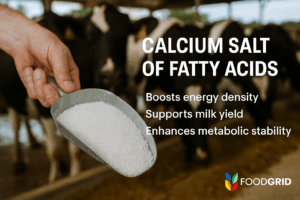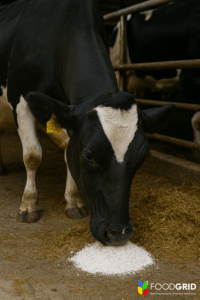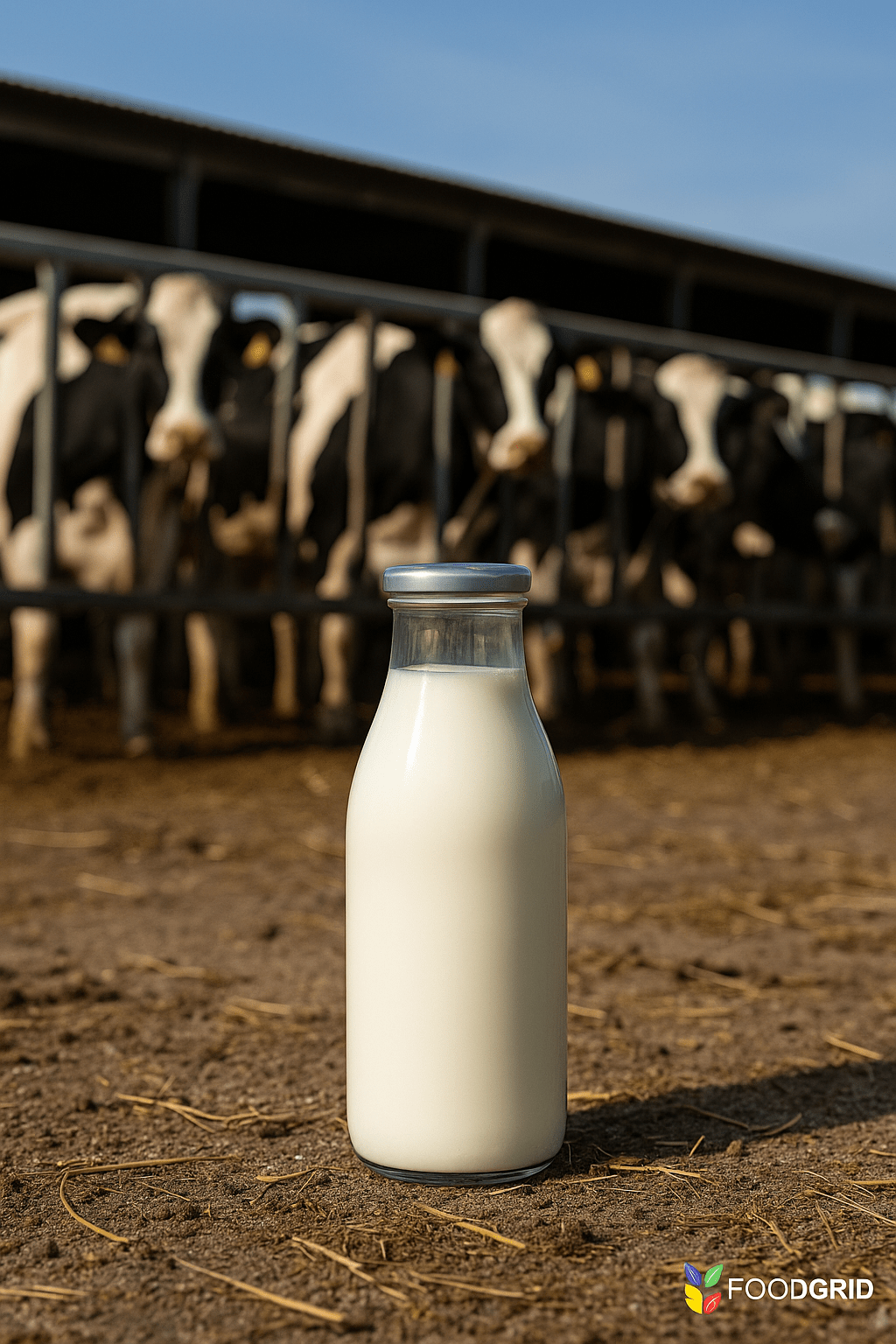Dairy producers face a recurring challenge: how to push milk production and butterfat content higher while managing rising feed costs and minimizing metabolic disorders. One solution—backed by decades of research and practical on-farm results—is the incorporation of calcium salts of fatty acids into feed formulations. These rumen-protected fat supplements deliver energy efficiently, stabilize performance in early lactation, and consistently show strong returns on investment when used correctly.
This guide gives herd nutritionists and farm managers a practical roadmap for incorporating calcium salts in dairy diets, maximizing both performance and profitability.
Why Calcium Salts Matter in Dairy Nutrition
Calcium salts of fatty acids (often referred to as “calcium soaps”) are manufactured from long-chain fatty acids such as palmitic and oleic acids. By reacting these fatty acids with calcium, they become rumen-inert, bypassing fermentation and delivering energy directly to the small intestine.
For high-producing dairy cows—especially in early lactation—energy is the most limiting nutrient. Negative energy balance not only reduces milk yield but also contributes to disorders like ketosis, fatty liver, and poor fertility.
Calcium salts address three critical nutrition challenges:
- Boosting Energy Density: Energy content of calcium salts (~2.5–3.0 Mcal/kg) far exceeds starch or protein.
- Supporting Milk Yield and Fat: Studies consistently show increases of 2–4 kg milk/day and up to 0.8% higher butterfat when correctly formulated.
- Enhancing Metabolic Stability: By sparing glucose and stabilizing body condition, calcium salts help reduce transition cow health issues.
Science-Backed Performance Outcomes
Multiple peer-reviewed studies and on-farm trials demonstrate the benefits:
- Milk Yield: Supplementation with 3–6% of diet DM as calcium salts typically boosts yield by 2–4 liters/day in high-producing cows (Chouinard et al., 1998; NRC, 2021).
- Milk Fat and Components: Palmitic acid–enriched salts raise butterfat percentages and improve fat-corrected milk, critical for processors paying on component basis.
- Reproductive Health: Improved energy balance reduces days open and supports earlier conception (Loften et al., 2014).
- Sustainability: By improving feed efficiency and reducing methane intensity per liter of milk, calcium salts contribute to environmental goals.

Practical Considerations for Formulation
- Inclusion Rate
- Standard Range: 3–6% of dietary dry matter.
- Target Groups: Early- to mid-lactation cows benefit most, though late-lactation cows may also gain from body condition stabilization.
- Fatty Acid Profiles
- Palmitic Acid (C16:0): Drives butterfat and energy density.
- Oleic Acid (C18:1): Improves digestibility of total fat, reduces dry matter intake depression, and supports milk volume.
- Blends: Palmitic/oleic blends provide a balance between fat yield and overall production efficiency.
- Rumen pH and Stability
Calcium salts are more stable than free fats under variable rumen pH conditions. This protects microbial fermentation, avoiding the depressions in fiber digestibility associated with unprotected fats.
- Interaction with Forage Base
High-fiber diets (e.g., corn silage + alfalfa) pair well with palmitic-rich salts for maximizing butterfat. Diets with more concentrate or starch may benefit from higher oleic inclusion to support digestibility.
Key Challenges and How to Overcome Them
- Energy Deficits in Early Lactation
- Problem: High-yielding cows often mobilize excessive body reserves.
- Solution: Introduce calcium salts in close-up and fresh diets to improve energy status without overloading starch.
- Variable Rumen pH
- Problem: Unstable pH reduces microbial efficiency.
- Solution: Calcium salts bypass fermentation, providing energy without exacerbating acidosis risk.
- Cost Sensitivity
- Problem: Rising fat prices can challenge adoption.
- Solution: Focus on ROI—every kg of extra milk or 0.1% fat increment has measurable payback. Purchasing in bulk (1-ton pallets) improves cost efficiency.
- Regulatory Scrutiny
- Problem: Pressure to reduce antibiotics and improve sustainability.
- Solution: Calcium salts indirectly support this by reducing metabolic stress and improving overall cow resilience.

Economic ROI: The Profitability Equation
The economics are straightforward:
- Milk Response: +2–4 kg/day at $0.45/kg = +$0.90 to $1.80/cow/day.
- Fat Response: +0.4–0.8% butterfat in component pricing = +$0.30–$0.60/cow/day.
- Cost: Calcium salts at ~$1.20–1.50/cow/day (depending on market).
Net Return: Typically $0.50–1.00/cow/day when milk markets reward yield and components. On a 500-cow herd, that’s $250–500/day or $7,500–15,000/month.
Supplier and Sourcing Insights
- Common Sources: Bulk supply via direct contracts or dairy cooperatives.
- Trusted Brands: Products like Valudor or Megalac are widely used.
- Procurement Strategy: Buying in pallet units (1 ton) ensures economies of scale. Herd nutritionists should benchmark suppliers on both fatty acid profile and consistency of product quality.
Practical Feeding Guidelines
- Start Gradually: Introduce calcium salts at 200–300 g/day, then ramp up to target inclusion.
- Monitor Milk Response: Use milk meters and DHI testing to measure impact within 2–3 weeks.
- Adjust by Stage of Lactation:
- Fresh Cows: Prioritize energy density.
- Peak Production: Maximize fat yield.
- Late Lactation: Support condition for reproduction.
- Watch for Substitutions: Ensure fat inclusion does not displace necessary amino acids or fiber.
References
- Loften, J. R., et al. (2014). “Palmitic and oleic acid effects on dairy cow performance.” Journal of Dairy Science, 97(8), 4687–4699. Available at: https://doi.org/10.3168/jds.2014-7929
- NRC (National Research Council). (2021). Nutrient Requirements of Dairy Cattle. Washington, DC: National Academies Press. Available at: https://nap.nationalacademies.org/catalog/25806/nutrient-requirements-of-dairy-cattle-eighth-revised-edition
- University of Wisconsin-Madison Extension: Fat Supplements in Dairy Nutrition. Available at: https://fyi.extension.wisc.edu/
Internal Resources for Further Exploration
For more insights on optimizing feed strategies, explore FoodGrid’s resources:
For more on practical feed strategies, check out FoodGrid Insights. You may also explore related articles on our FoodGrid Blog, where we cover innovations in dairy nutrition, sustainable feed strategies, and ROI-driven supplementation.
Ready to maximize milk yield and profitability with proven fat supplementation?
👉 Partner with FoodGrid to source premium calcium salt blends designed for dairy efficiency.
Contact us today to discuss tailored formulations and bulk pricing options for your operation.
